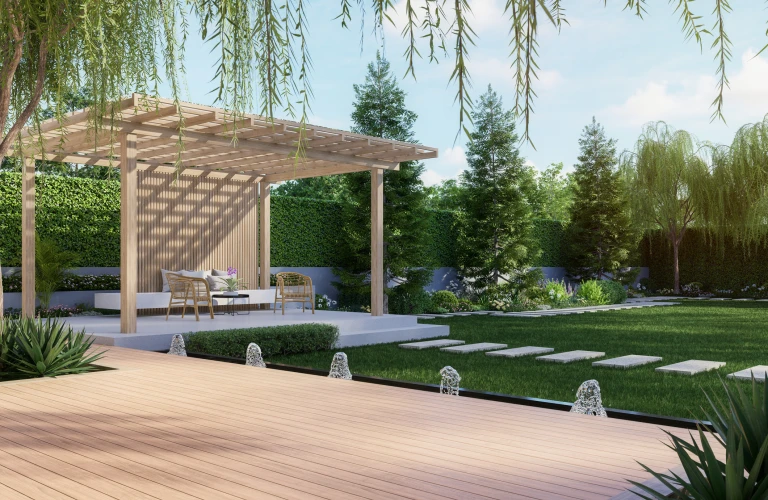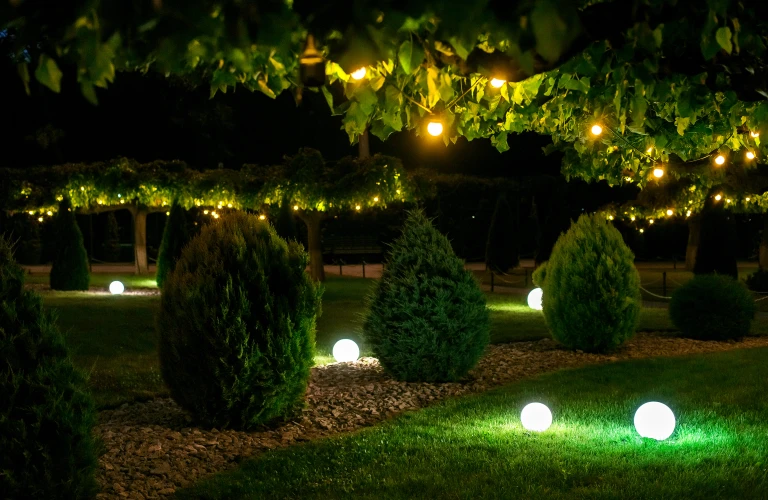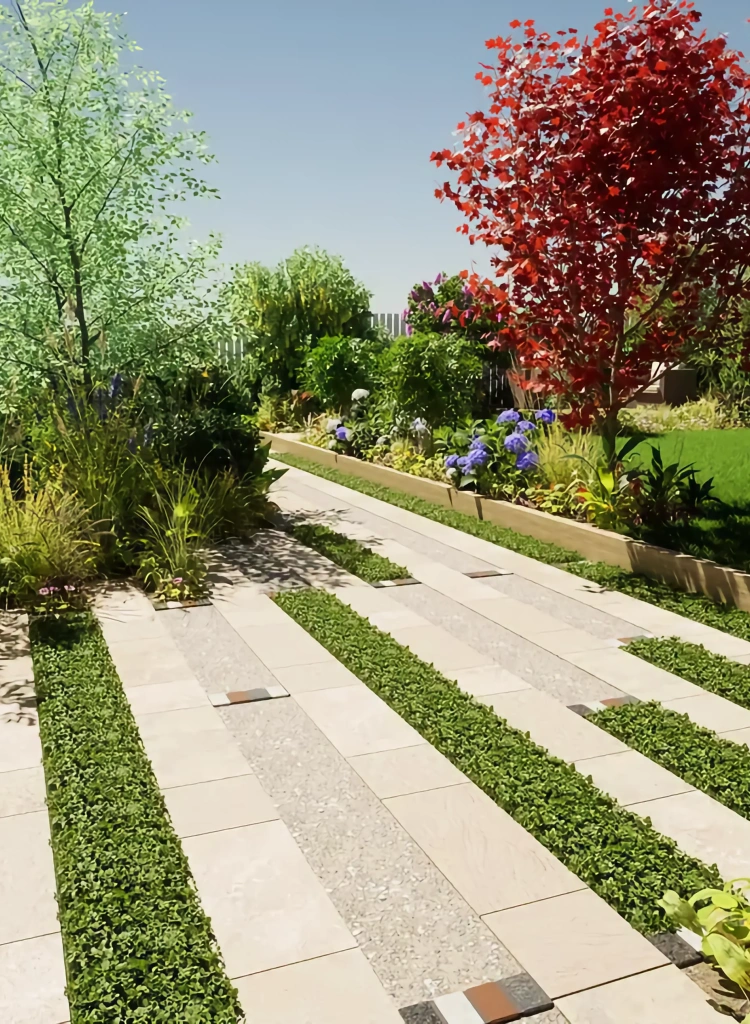
Designing a Social Garden Space: How to Encourage Interactions
Designing urban spaces and public spaces that encourage social interactions is a concept gaining increasing attention in the realm of landscape architecture and urban planning. The design of urban spaces plays a crucial role in promoting interaction and fostering a sense of community. It is important to create inclusive landscapes that cater to the diverse needs of the public, as this contributes to overall well-being. By carefully considering landscape design and the integration of various elements, such as seating areas, pathways, and gathering spaces, we can create welcoming and inclusive garden environments that foster social cohesion, social interaction, and meaningful connections among individuals. This planning is essential for creating spaces that promote a sense of community and togetherness.
We will review the characteristics of inclusive landscape garden spaces that support social interactions and delve into case studies showcasing successful examples of integration in urban planning for cities. We will discuss planning practices and strategies to enhance social cohesion and social integration within these spaces, promoting inclusive design and fostering social interaction. Whether you are a homeowner looking to revamp your own backyard or a professional seeking inspiration for public projects, this article aims to provide valuable insights into designing inclusive landscape spaces that promote social interactions in the city. From planning to execution, each chapter of this article will guide you in creating garden spaces that foster community engagement.
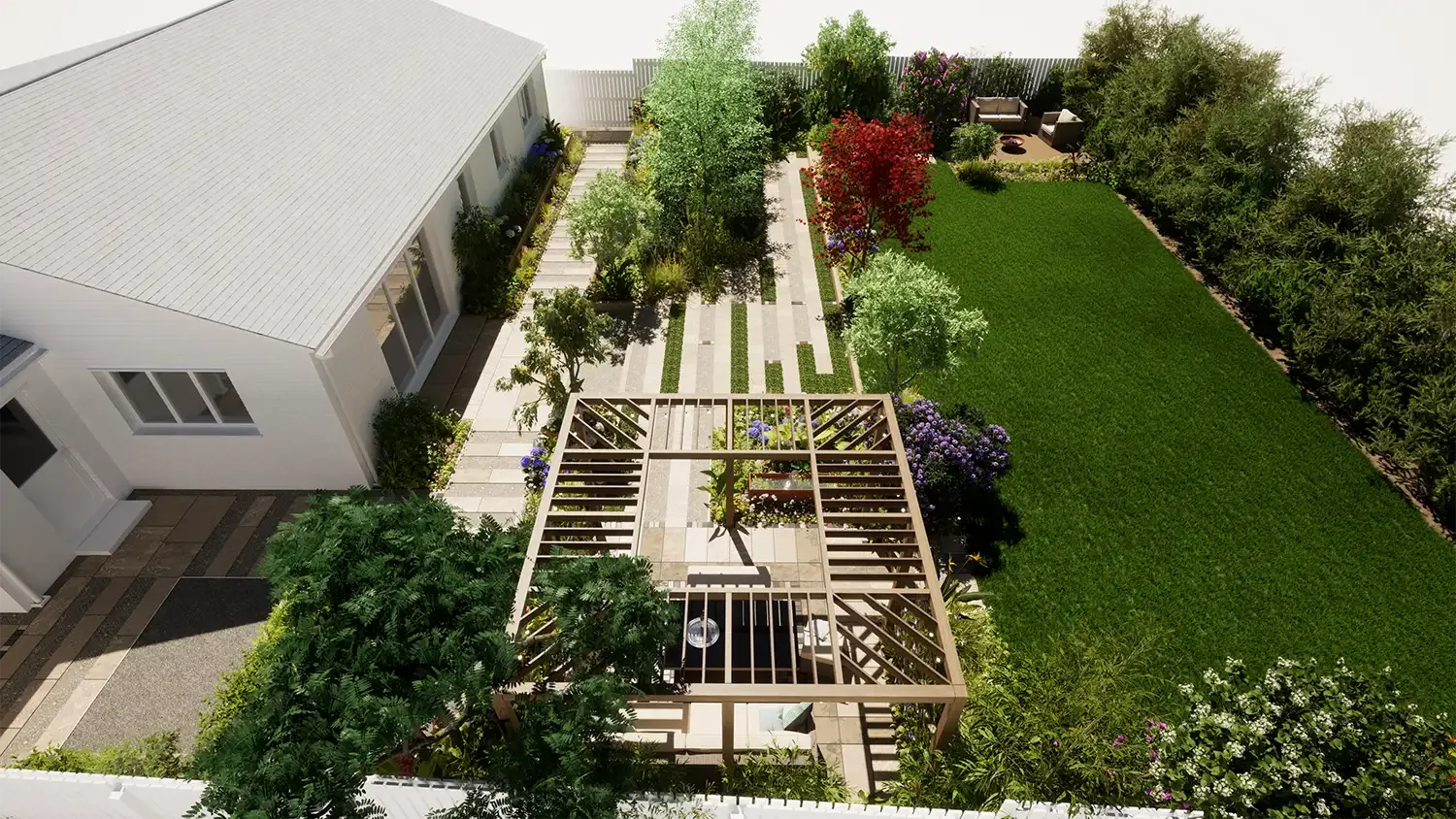
Understanding Garden Design for Social Interaction
Garden design plays a crucial role in creating an inclusive landscape that fosters social interaction in the city planning. By considering key concepts and principles of inclusive landscape design, we can create public spaces that encourage social interaction and engagement in the city. The layout and features of an inclusive landscape design have a significant impact on shaping social behavior within public spaces. Interaction within these spaces is key to fostering inclusivity and promoting inclusive design.
Role of Garden Design in Facilitating Social Connections
Garden design has the power to create an inclusive landscape that brings people together and promotes social interactions in public spaces within the city. This is a key chapter in fostering community connections. A well-designed garden promotes social interaction and integration, fostering social cohesion in an inclusive landscape. It provides opportunities for individuals to connect, communicate, and engage with one another. Inclusive landscape design promotes social cohesion and social integration by creating an inviting atmosphere that encourages social interaction. It fosters a sense of community and togetherness, encouraging people to spend time outdoors.
Key Concepts and Principles of Garden Design for Social Interaction in Urban Spaces Green space and outdoor spaces play a crucial role in creating a sense of community and connection among residents. Incorporating façade gardens into urban spaces is a popular trend that enhances the overall aesthetic appeal while also providing a peaceful environment for social interaction.
In this chapter, we will explore several key concepts and principles that can guide us in designing public gardens that facilitate social interaction. First, consider the importance of creating inclusive gathering spaces within the garden, such as courtyards or seating areas, to promote social integration and encourage social interaction in an inclusive landscape design. These designated areas act as focal points for social interaction, conversations, and shared experiences. They promote social integration and serve as a chapter for public engagement.
Secondly, incorporating elements of nature into the garden design enhances its appeal and promotes relaxation, while also encouraging social interaction in a public setting. The chapter on garden design emphasizes the importance of incorporating natural elements to create an inviting space for people to gather and connect with one another. Inclusive landscape design features, such as water fountains or lush greenery, create a calming ambiance in public spaces. This encourages people to linger and promotes social interactions, making the space more inclusive and welcoming.
Furthermore, designing pathways that encourage social interaction and meander through the garden can stimulate exploration and discovery. This can be achieved by creating a chapter-like experience where individuals can engage in public spaces and interact with one another. These inclusive landscape design paths not only serve a functional purpose but also invite individuals to engage in social interaction with their surroundings while conversing with others along the way in public spaces.
Influence of Garden Layout and Features on Social Behaviour
The layout and features of an inclusive landscape design significantly influence how people interact socially within the space. Inclusive design is a crucial aspect of creating a welcoming and accessible environment. This chapter explores the impact of inclusive landscape design on social interaction. For instance, when seating is strategically placed in public spaces, facing each other rather than arranged in isolation, it naturally facilitates social interaction among individuals. This inclusive design approach can be applied to inclusive landscape design.
Incorporating communal activities or interactive elements into the garden design encourages social interaction from multiple users simultaneously in a public space. This promotes a sense of community and engagement, enhancing the overall experience of the garden chapter. This could include inclusive design features like outdoor games or art installations that prompt social interaction and collaboration among visitors in an inclusive landscape design.
Moreover, in landscape design, the choice of plants and flowers can also impact social behavior and promote interaction. Inclusive design principles should be considered when selecting plants and flowers, as they play a crucial role in creating an inclusive and welcoming environment. This chapter explores the relationship between landscape design and social interaction, highlighting the importance of inclusive design in creating spaces that foster positive social behavior. Vibrant and visually appealing flora in landscape design can attract people’s attention and serve as conversation starters, promoting social interaction. This inclusive design approach is an important chapter in creating engaging outdoor spaces. By creating a visually stimulating environment, garden design stimulates social interaction and encourages individuals to engage with one another in public. This chapter explores how the design of gardens can foster curiosity and promote social interaction.
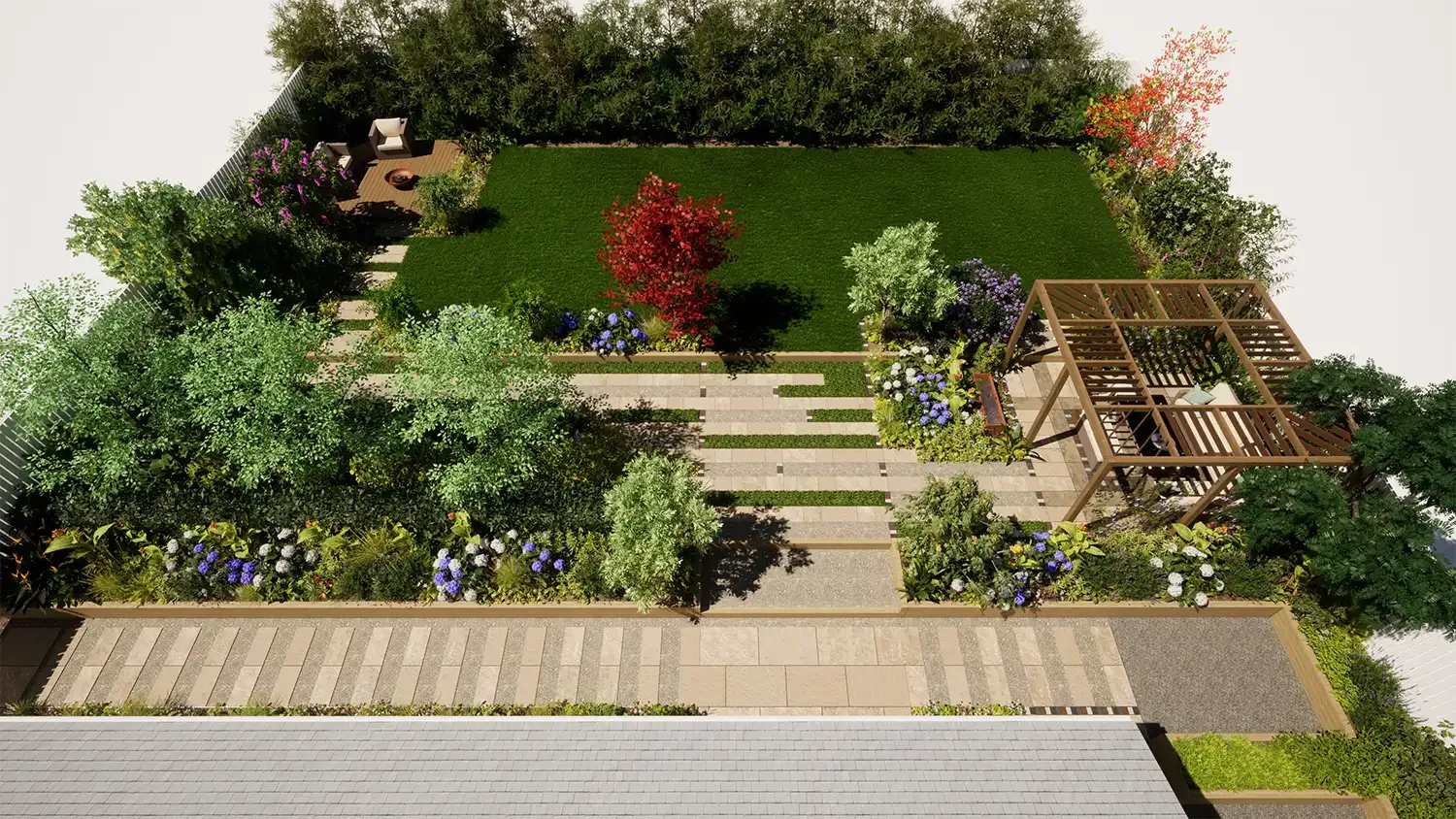
Principles of Environmental Design in Social Spaces
Incorporating outdoor spaces and green space elements in urban spaces through inclusive landscape design can greatly enhance social experiences in gardens.
One of the key principles in creating garden spaces that encourage social interactions is incorporating elements of nature. This chapter discusses the importance of public gardens in promoting community engagement and environmental design. By integrating natural elements such as plants, trees, and water features into the garden design, it creates a sense of tranquility and connection with the environment, promoting social interaction and public engagement. In landscape design, the presence of greenery not only adds visual appeal but also provides a calming effect, making people feel more relaxed and at ease. This inclusive design promotes social interaction and creates a welcoming environment for all. In this chapter, we will explore the importance of incorporating these elements into our designs.
In addition to plants, incorporating rocks or pebbles can enhance the landscape design by creating focal points within the garden space. This chapter explores how these natural elements can contribute to the overall aesthetic and social interaction in the garden. These landscape design elements can serve as gathering spots for social interactions or seating areas where people can engage in conversations. They are an essential chapter in creating a well-designed outdoor space. By strategically incorporating landscape design elements into the garden, it encourages movement and exploration, leading to increased opportunities for social interaction. This is an important aspect to consider in this chapter.
Balancing Aesthetics and Functionality in Socially Interactive Garden Design
When designing a garden space that encourages social interactions, it is important to strike a balance between aesthetics and functionality in every chapter. While aesthetics and functionality play significant roles in creating an inviting atmosphere and practical space for various activities, it is also important to consider the social interaction aspect.
Consideration should be given to providing comfortable seating options that accommodate different group sizes in each chapter. Benches or outdoor furniture placed strategically throughout the garden can facilitate conversations and gatherings in every chapter. Providing shaded areas or pergolas in each chapter allows people to enjoy the outdoors while being protected from direct sunlight or rain.
Furthermore, when designing pathways, it is important to consider ease of navigation in mind. This will ensure that individuals can easily move from one chapter to another without any difficulties. Clear pathways in the garden space effortlessly guide visitors through each chapter and encourage exploration. This promotes chance encounters between individuals and increases opportunities for spontaneous interactions in every chapter.
Considering the sensory aspects of garden spaces, including façade gardens and courtyards, is essential in creating a conducive environment for social interactions. This approach combines inclusive landscape design with architecture to optimize the overall experience.
To create a conducive environment for social interactions within garden spaces, it is essential to consider sensory aspects in every chapter. Engaging multiple senses in each chapter enhances the overall experience and stimulates conversation among visitors.
Visual stimuli can be incorporated in this chapter through the use of vibrant flowers, colourful foliage, and visually appealing design elements. The visual beauty of the garden creates a pleasant ambiance and serves as a conversation starter in this chapter.
Auditory elements such as gentle water features or wind chimes can add a soothing background noise that enhances relaxation and encourages communication in this chapter. These subtle sounds create an atmosphere conducive to conversation without overpowering it, setting the stage for the next chapter in the blog post.
Tactile elements, such as textured surfaces or interactive installations, can enhance physical engagement within the garden space. These elements create a sense of connection and interaction, making the garden a truly immersive experience. Whether it’s running your fingers over a rough stone or playing with an interactive installation, these tactile elements add a new dimension to the garden. They invite visitors to explore and engage with the space on a deeper level, creating memorable experiences that will be cherished for years to come. So, if you’re looking to create a garden that tells a story, consider incorporating tactile elements into each These chapter features invite visitors to touch, feel, and interact with their surroundings, fostering a sense of connection and shared experience.
By thoughtfully incorporating these sensory aspects into garden design, it creates an environment that stimulates social interactions and fosters meaningful connections among individuals in this chapter.
Benefits of Socially Interactive Garden Spaces
Positive Impact on Mental Well-being
Chapter Socially engaging gardens have a profound positive impact on mental well-being. These garden spaces provide opportunities for individuals to connect with nature and engage in activities that promote relaxation and stress reduction. Each chapter of these garden spaces allows individuals to immerse themselves in nature and find solace, ultimately leading to relaxation and stress reduction. The presence of greenery, flowers, and natural elements in this chapter helps create a serene and calming environment, which can alleviate anxiety and improve mood. Interacting with others in these spaces also fosters social connections, reducing feelings of loneliness and isolation. This is especially important in the context of the chapter.
Promoting Physical Activity and Healthy Lifestyles
Interactive garden designs encourage physical activity and contribute to healthy lifestyles. By incorporating features such as walking paths, outdoor fitness equipment, or sports areas, these spaces motivate individuals to engage in physical exercise. Regular physical activity is essential for maintaining overall health and well-being. The exposure to fresh air and sunlight during outdoor activities supports the body’s production of vitamin D, which is vital for bone health.
Enhancing Community Bonds and Fostering Belonging
Socially interactive garden spaces play a crucial role in enhancing community bonds and fostering a sense of belonging among residents. These shared outdoor areas provide opportunities for people from different backgrounds to come together, interact, and build relationships. Community gardening projects or shared allotments encourage collaboration among neighbours, promoting teamwork while cultivating plants or growing produce collectively. This collaborative effort strengthens community ties by creating a sense of ownership over the space.
Improving Social Integration
Designing garden spaces that encourage social interactions contributes to improved social integration within communities. These spaces act as meeting points where people can gather for various activities such as picnics, barbecues or group exercises. The availability of seating areas promotes conversations between individuals from different age groups or cultural backgrounds, facilitating cross-cultural exchanges that foster understanding and acceptance.
Supporting Well-rounded Development in Children
Socially interactive gardens are particularly beneficial for children’s development. They provide an opportunity for children to engage in unstructured play, which promotes creativity, problem-solving skills, and social interaction. Gardens with designated play areas or sensory gardens stimulate children’s senses and encourage exploration. The presence of nature also helps children develop an appreciation for the environment and instils a sense of responsibility towards its preservation.
Factors to Consider for Socially Engaging Gardens
Assessing Available Space and its Potential for Social Interactions
To design a garden space that encourages social interactions, it is crucial to assess the available space and understand its potential. Consider the size, layout, and features of the area. Are there open spaces suitable for gatherings? Are there secluded corners that can provide privacy for intimate conversations? By evaluating these aspects, you can determine how best to utilize the space for social engagement.
Considering the Demographic and Needs of the Target Audience
When designing a socially engaging garden, it is essential to consider the demographic and needs of your target audience. Different groups may have varying preferences and requirements. For example, if your garden is intended for families with children, you might incorporate play areas or interactive elements like swings or climbing structures. On the other hand, if your target audience consists mainly of older adults, comfortable seating areas with shade may be more appropriate. By understanding who will be using the garden and their specific needs, you can create an environment that fosters meaningful social interactions.
Evaluating Local Climate and Environmental Conditions
The local climate and environmental conditions play a significant role in designing a socially engaging garden. Take into account factors such as temperature fluctuations, rainfall patterns, sunlight exposure, wind direction, and soil quality. This information will guide your choice of plants, materials used in construction (e.g., durable furniture), shading options (e.g., pergolas or umbrellas), and even lighting solutions (e.g., warm lighting during cooler evenings). By adapting your design to suit these conditions effectively, you can ensure that people feel comfortable spending time in the garden throughout different seasons.
In addition to these key considerations when designing a socially engaging garden space that encourages social interactions:
- Incorporate seating areas strategically throughout the garden to facilitate conversations.
- Create designated gathering spots where people can come together comfortably.
- Integrate elements that promote active engagement, such as interactive games or sports areas.
- Provide a variety of sensory experiences through the use of different textures, scents, and sounds.
- Consider accessibility features to ensure that everyone can participate in social activities within the garden.
Remember, each garden is unique, and customization is essential to cater to specific needs. By carefully assessing the available space, understanding the target audience’s demographic and needs, and evaluating local climate and environmental conditions, you can design a socially engaging garden space that encourages meaningful social interactions.
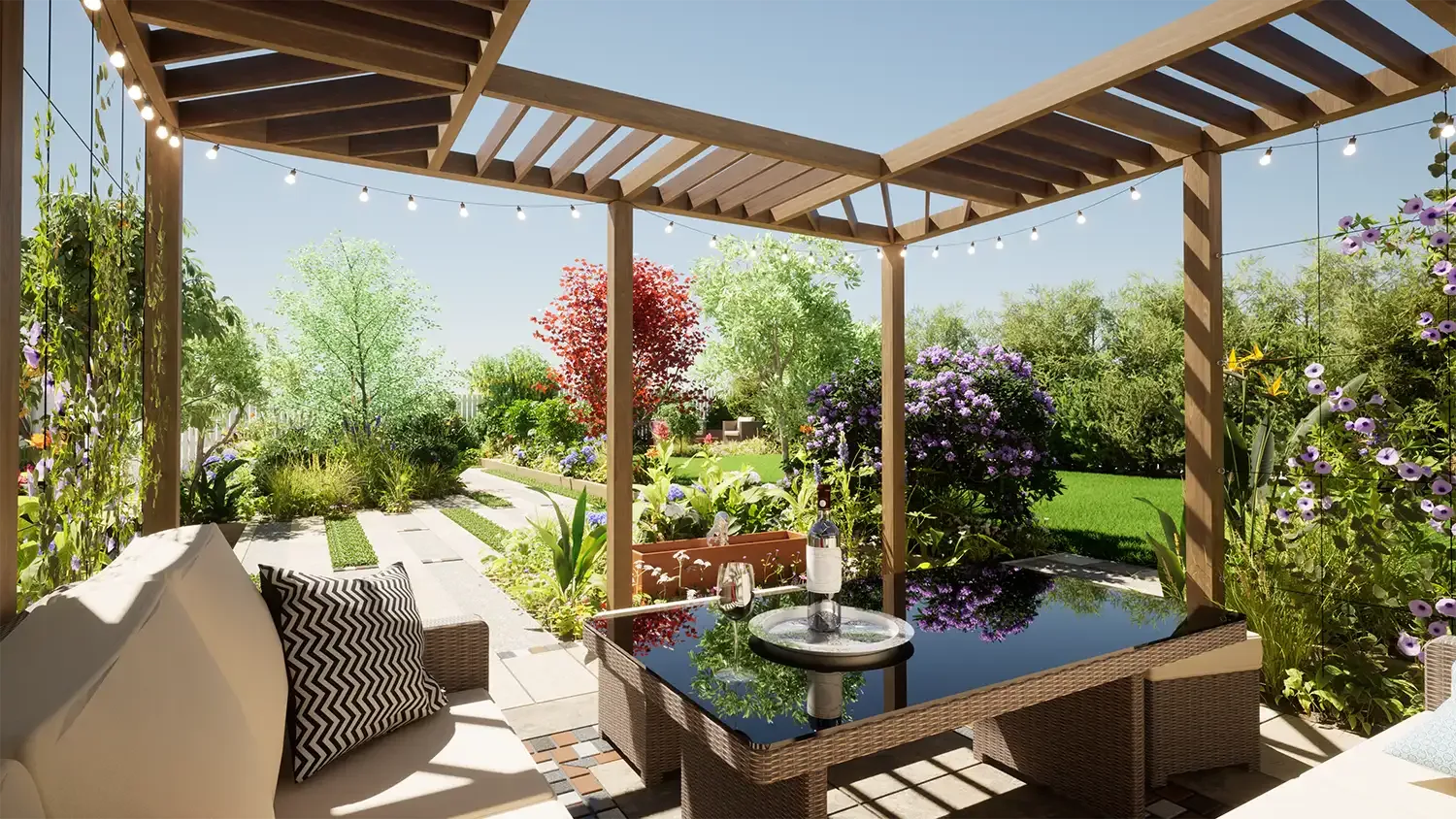
Strategies to Foster Social Cohesion Through Garden Design
To design a garden space that encourages social interactions, there are several strategies you can employ. By incorporating these elements into your garden design, you can create a welcoming and inviting atmosphere that promotes social cohesion among visitors.
Incorporating seating areas and gathering spaces
One effective way to encourage social interactions in your garden is by incorporating ample seating areas and gathering spaces. By providing comfortable seating options such as benches, chairs, or even picnic tables, you create designated areas for people to relax and engage with one another. These spaces can be strategically placed throughout the garden to encourage visitors to pause, sit down, and strike up conversations with fellow garden enthusiasts.
Creating pathways that facilitate movement
Another strategy for fostering social cohesion through garden design is to create pathways that facilitate movement and encourage encounters between visitors. By designing pathways that meander through different sections of the garden, you create opportunities for people to cross paths and interact naturally. These pathways can be adorned with beautiful plants and flowers, further enhancing the overall experience of walking through the garden while promoting serendipitous encounters.
Using landscaping techniques for privacy and openness
In communal areas of the garden where social interactions are encouraged, it’s important to strike a balance between providing privacy and maintaining a sense of openness. Landscaping techniques such as hedges or tall plants can be used strategically to create secluded corners or nooks where individuals or small groups can gather comfortably without feeling exposed. At the same time, it’s essential to ensure that these additions do not obstruct sightlines or make the space feel closed off from other parts of the garden.
By using well-placed planting beds or low-level fencing instead of high barriers, you maintain an open feel while still providing some level of privacy within communal areas. This approach allows visitors to feel connected with their surroundings while also enjoying intimate conversations with others.
Design Elements that Encourage Encounter and Engagement
To create a garden space that encourages social interactions, several design elements can be incorporated. These elements aim to attract attention, spark conversations, and provide opportunities for active interaction among individuals. By considering these design approaches, you can cultivate an environment that fosters social engagement within your garden.
Focal Points or Landmarks
Incorporating focal points or landmarks is an effective way to draw people’s attention and encourage encounters in the garden. These features serve as conversation starters and gathering spots. For instance, a striking sculpture or a beautifully designed seating area can become a central point where people naturally gravitate towards. By strategically placing these focal points throughout the garden, you create opportunities for spontaneous interactions between visitors.
Interactive Features
Integrating interactive features into the garden design adds an element of fun and encourages active engagement among individuals. Water features such as fountains or ponds not only provide visual appeal but also invite people to interact with them by touching the water or listening to its soothing sounds. Art installations that allow visitors to contribute their own creative expressions can also stimulate conversations and collaboration within the garden space. Incorporating play areas with equipment like swings or climbing structures creates opportunities for both children and adults to engage in playful interactions.
Lighting Techniques
Lighting plays a crucial role in creating ambiance and extending the usability of garden spaces during evenings. Thoughtfully designed lighting techniques can enhance the atmosphere, making it more inviting for social gatherings after sunset. Softly lit pathways guide visitors through the garden while maintaining a sense of intimacy. Accent lighting on trees or architectural features adds depth and interest to the space while providing focal points for conversations. By incorporating various lighting techniques, you ensure that your garden remains vibrant even after dark, encouraging continued social interactions.
By combining these design elements – focal points or landmarks, interactive features, and lighting techniques – you can transform your garden into a space that naturally encourages encounters and active engagement among individuals. These elements create an environment that sparks conversations, fosters collaboration, and provides opportunities for social interactions. Whether it’s a gathering of friends, a community event, or simply a quiet moment shared between neighbours, your thoughtfully designed garden will become a catalyst for meaningful connections and memorable experiences.
Inclusivity and Accessibility in Garden Spaces
Designing a garden space that encourages social interactions involves creating an inclusive and accessible environment for people of all abilities. By incorporating universal design principles, such as thoughtful layout and features, outdoor spaces can become welcoming and usable for everyone.
Designing gardens with accessibility in mind
When designing garden spaces, it is crucial to consider the needs of individuals with disabilities. This includes providing wheelchair-accessible pathways that are wide enough for easy navigation. The paths should be smooth, level, and free from any obstacles that may hinder movement.
In addition to accessible pathways, it is important to ensure that seating areas within the garden can accommodate individuals with mobility challenges. Installing benches or seats at varying heights allows people to choose the most comfortable option based on their specific needs.
Incorporating universal design principles
Universal design aims to create environments that are usable by people with diverse abilities and preferences. In the context of garden spaces, this means considering different sensory experiences and providing options for engagement.
For example, including a variety of plants with different textures, scents, and colours can appeal to individuals with varying sensory sensitivities. Incorporating elements like water features or wind chimes can enhance the auditory experience and create a soothing atmosphere.
Providing seating options, shade, and shelter
To encourage social interactions in garden spaces, it is essential to provide comfortable seating options throughout the area. This allows individuals to rest and relax while enjoying the surroundings or engaging in conversations with others.
Furthermore, offering shaded areas within the garden helps protect visitors from excessive sun exposure on hot days. This ensures that people can comfortably spend time outdoors without feeling overheated or uncomfortable.
Providing shelters or covered areas allows visitors to seek refuge during unexpected rain showers or inclement weather conditions. These shelters can also serve as gathering points where people can come together for group activities or events.
By prioritizing inclusivity and accessibility in garden design, outdoor spaces can become vibrant and welcoming communal areas. Inclusive landscape design not only benefits individuals with disabilities but also contributes to the overall quality of public spaces in urban areas.
Sustainable Practices in Social Garden Design
Implementing eco-friendly planting techniques and using native plants in inclusive landscape design and urban planning to promote biodiversity in outdoor spaces.
One way to design a garden space that encourages social interactions is by implementing eco-friendly landscaping techniques and incorporating native plants. By choosing plants that are indigenous to the local area, the garden can support biodiversity and provide a habitat for local wildlife. Native plants also tend to be more resilient and require less maintenance, making them an excellent choice for sustainable garden design.
Incorporating water conservation measures such as rainwater harvesting or efficient irrigation systems is essential in urban planning and design approaches for outdoor spaces, particularly when it comes to planting.
Water conservation is an essential aspect of sustainable garden design. By incorporating measures like rainwater harvesting or efficient irrigation systems, you can minimize water waste and create a more environmentally friendly garden space. Rainwater harvesting involves collecting rainwater from roofs or other surfaces and storing it for later use in watering the garden. This reduces reliance on municipal water sources and ensures that water is used efficiently.
Using recycled materials and sustainable construction practices in planting design for urban and open spaces is an essential part of planning.
Another way to promote sustainability in social garden design is by using recycled materials and adopting sustainable construction practices. Recycled materials such as reclaimed wood, repurposed containers, or salvaged bricks can add character to the garden while reducing waste. Opting for sustainable construction practices like using permeable paving materials can help manage stormwater runoff effectively.
By incorporating these sustainable practices into your garden design, you not only create a space that encourages social interactions but also contribute positively to the environment.
For example, imagine designing a community garden with raised beds made from reclaimed wood pallets. This not only provides an opportunity for people to come together and grow their own food but also reduces waste by repurposing discarded materials.
Engaging the Community in the Design Process
Involving local residents, community groups, and stakeholders in the planning and decision-making stages is crucial for promoting inclusive design and fostering social integration, interaction, and cohesion.
Designing a garden space that encourages social interactions requires input from the very people who will be using it. By involving local residents, community groups, and stakeholders in the planning and decision-making stages, designers can ensure that the garden meets the needs and desires of the community.
One way to engage with the community is by conducting surveys or workshops to gather input and ideas. Surveys can be distributed online or through neighborhood associations to reach a wider audience. Workshops provide an opportunity for face-to-face interaction and brainstorming sessions where participants can share their visions for the garden space.
Collaborating with landscape architects, designers, and horticulturists to plan and create a socially engaging garden for planting in urban spaces that promotes interaction and meets community needs.
Collaboration is key when designing a garden space that fosters social interactions. Landscape architects, designers, and horticulturists bring their expertise to the table to create a visually appealing and functional design.
Landscape architects are skilled in creating outdoor spaces that are both aesthetically pleasing and practical. They consider factors such as site analysis, accessibility, circulation patterns, seating areas, lighting, and plant selection.
Designers play a crucial role in transforming ideas into tangible designs. They incorporate elements such as seating arrangements, gathering spaces, pathways, water features, art installations, or recreational areas into their plans.
Horticulturists contribute their knowledge of plants to ensure that the garden is not only beautiful but also sustainable. They select plants that thrive in the local climate while providing visual interest throughout different seasons.
By collaborating with these professionals during the design process, community needs can be met effectively while ensuring an engaging environment for social interactions.
Conclusion
In conclusion, designing a garden space that encourages social interactions requires careful consideration of various factors. By understanding the principles of environmental design and incorporating strategies to foster social cohesion, garden designers can create spaces that promote encounter and engagement. Inclusivity and accessibility should be prioritized to ensure that all individuals can participate in these socially engaging gardens. Furthermore, sustainable practices and involving the community in the design process contribute to the long-term success and enjoyment of these spaces.
To create a garden space that encourages social interactions, individuals can apply the principles discussed in this article. By considering the needs of the community, incorporating inclusive design elements, and embracing sustainable practices, garden designers can foster a sense of belonging and connection within their spaces. It is essential to remember that well-designed gardens have the potential to bring people together, enhance well-being, and create memorable experiences for everyone involved.
Frequently Asked Questions
How can garden design encourage social interactions?
Garden design can encourage social interactions by incorporating elements such as seating areas, communal spaces, and pathways that promote movement and connection. By creating inviting environments, incorporating interactive features, and considering accessibility, garden spaces can foster social engagement among individuals.
What are the benefits of socially interactive garden spaces?
Socially interactive garden spaces offer numerous benefits. They provide opportunities for community bonding, relaxation, and recreation. These spaces promote physical activity, mental well-being, and a sense of belonging. They can enhance biodiversity and contribute to sustainable practices.
What factors should be considered for socially engaging gardens?
Several factors contribute to creating socially engaging gardens. These include the layout and arrangement of seating areas, the integration of plants and natural elements to create a pleasant atmosphere, consideration of lighting for different times of day or evening use, provision of amenities like water features or play areas, and ensuring accessibility for all individuals.
How can garden design foster social cohesion?
Garden design can foster social cohesion by incorporating strategies such as creating shared spaces that facilitate interaction between people. This includes designing paths that encourage encounters between visitors or providing communal gathering spots where people can engage in activities together. By promoting inclusivity and accessibility within these designs, social cohesion is further enhanced.
Why is community engagement important in the garden design process? Community engagement is crucial for fostering social cohesion and promoting social integration in urban spaces. By involving the community in the garden design process, it encourages social interaction and creates a sense of belonging within the community.
Community engagement is crucial in the garden design process as it ensures that the needs and preferences of the local community are taken into account. By involving community members in decision-making processes through consultations or workshops, their input helps create a sense of ownership over the space while also fostering a stronger connection between residents and their environment.
Other Posts

Native Planting Schemes for Glasgow Gardens
